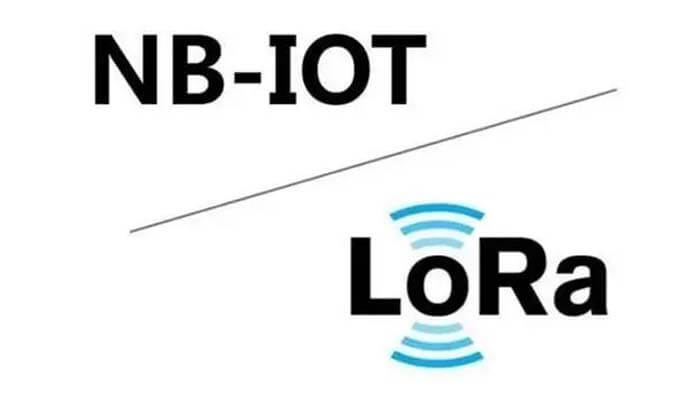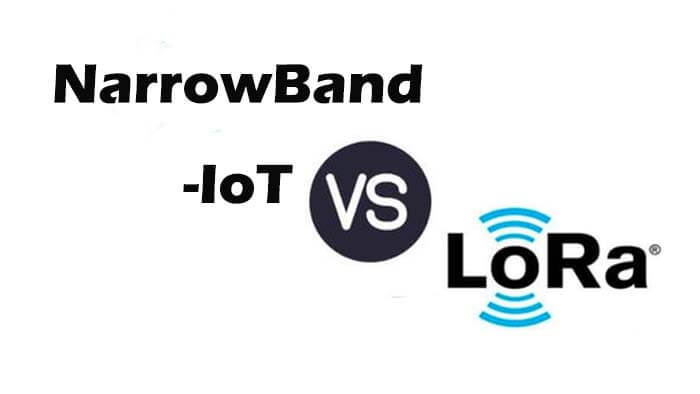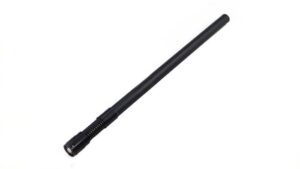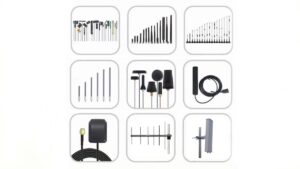What is the difference between narrowband-IoT vs Lora in LPWAN technology?

The two Narrowband-IoT vs Lora technologies have different technical and commercial characteristics and therefore differ in terms of application scenarios. This article explains the differences between the Narrowband-IoT vs Lora two technologies and explains the application scenarios for which each is suitable.
Here have 6 main differences of Narrowband-IoT vs Lora comparisons.
Different market positioning of Narrowband-IoT vs Lora
Many factors need to be considered for IoT applications, such as node cost, network cost, battery life, data transfer rate (throughput), latency, mobility, network coverage, and deployment type. It can be argued that no one technology can meet all the needs of IoT.
Different frequency band, quality of service, and cost of Narrowband-IoT vs Lora
LoRa operates in the unlicensed band below 1GHz and therefore does not require additional payment for its application.
The band between 500 MHz and 1 GHz is optimal for long-range communication, as the actual size and efficiency of the antenna are quite advantageous.
LoRaWAN uses free unlicensed bands and is an asynchronous communication protocol, making it the best choice for battery power and low cost.
LoRa and LoRaWAN protocols, which have unique characteristics in terms of handling interference, network overlap, and scalability, do not offer the same quality of service (QoS) as cellular protocols.
Bidding for the licensed Sub-GHz band is reported to be in excess of $500 million per MHz. Cellular networks and NB-IoT do not offer the same battery life as LoRa due to quality of service (QoS) considerations.
Due to QoS and high band usage fees, cellular and NB-IoT are recommended for applications where QoS is required, and LoRa is a good choice when low cost and a large number of connections are preferred.
Different battery life and downlink latency of Narrowband-IoT vs Lora
Cellular networks are designed with the idea of optimal band utilization, at the expense of node cost and battery life. Conversely, LoRaWAN nodes are built for low cost and long battery life and are somewhat lacking in terms of band utilization.
There are two important factors to consider regarding battery life, the current consumption of the node (peak and average currents) and the protocol content.
LoRaWAN is an asynchronous ALOHA-based protocol, meaning that nodes can sleep for long or short periods of time depending on the needs of the specific application scenario, whereas with synchronous protocols such as cellular, nodes must be networked regularly.
For example, a commercially available mobile phone must now synchronize with the network every 1.5s when working. In NB-IoT, this synchronization becomes less frequent but still takes place at regular intervals, thus consuming additional battery power.
In cellular networks modulation is an effective means of making full use of the frequency band, but this is not effective from the node’s point of view.
Cellular modulation (OFDM or FDMA) requires a linear transmitter to generate the modulation signal, and a linear transmitter requires several orders of magnitude more peak current than non-linear modulation, and higher peak currents consume more battery power.
However, synchronous communication protocols offer advantages in terms of shorter downlink latency, while NB-IoT can provide fast data transfer rates for applications that require large data throughput.
Class B of LoRaWAN reduces downlink communication latency by periodically (programmatically implemented) waking up the terminal to receive downlink messages.
So NB-IoT may be a better choice for applications requiring frequent communication, shorter latency, or larger data volumes, while LoRa is better for scenarios requiring lower cost, higher battery life, and less frequent communication.
Different network coverage and deployment schedules for Narrowband-IoT vs Lora
An obvious advantage for NB-IoT is that network deployment can be provided by upgrading existing network facilities, but such upgrades are limited to certain specific 4G/LTE base stations and are costly. Such upgrades are only suitable for urban areas that already have 4G/LTE coverage and are not suitable for remote or suburban areas that do not have 4G coverage.
In addition to network deployment, the corresponding commercialization and industry chain establishment will take longer and require more effort to explore, but will market demand and opportunities wait?
The entire LoRa industry chain is relatively mature, and many countries around the world are in the process of or have already completed national network deployments.
One of the outstanding advantages of the LoRa chain is the autonomy that each member of the chain holds, and some large companies are planning to create a hybrid business model for deploying networks and applications. However, the NB-IoT chain will be limited by frequency bands, operators, etc.
Narrowband-IoT vs Lora in terms of device cost, network cost, and hybrid model
The LoRaWAN protocol is simpler than NB-IoT for end nodes, easier to develop, and more suitable and compatible with microprocessors.
NB-IoT has a more complex modulation mechanism and protocol, which requires more complex circuitry and costs more money, and NB-IoT is taxed like 3GPP.
At this stage, the tax is about $5 for a mobile phone, but this seems too expensive for IoT devices, and a rash reduction in the tax would cause price disruption in the mobile communications market such as mobile phones.
So it is a big question for the 3GPP to weigh the tax on both IoT and mobile communications.
Low-cost, relatively mature LoRa modules are already available on the market, and upgraded versions will follow.
The absence of excessive copyright and tax restrictions in the LoRa consortium makes it possible to offer modules for less than US$4 in the LoRa chain.
LoRa modules on the market today are typically priced at $7-10, but as the technology matures $4-5 is not a big deal. An LTE module, on the other hand, can hardly cost less than $20 these days.
Deployments for IoT and LPWAN require different models to reduce expenses and operating costs compared to traditional “tower” only networks.
LoRaWAN deployments are less expensive as they can be done using traditional towers, industrial base stations, or even portable home gateways.
At this stage a tower base station costs around $1000, an industrial base station costs less than $500 and a home gateway costs only around $100.
But for NB-IoT, the price of upgrading existing 4G LTE base stations is conservatively estimated to be no less than US$15,000 each.
Examples of Narrowband-IoT vs Lora applications
As mentioned before, no single technology can meet all the needs of IoT applications at the same time. The following are a few specific examples of Narrowband-IoT vs Lora applications where NB-IoT and LoRa are each suitable.
Narrowband-IoT vs Lora in Smart Meters application
Companies and sectors involved in the smart meter sector require high rates of data transmission, frequent communication, and low latency.
As the meters are powered from the mains, there is no need for ultra-low power consumption and long battery life. And there is also a need for real-time monitoring of the wired network so that hidden problems can be dealt with when they are detected.
LoRaWAN’s ClassC can achieve low latency, but for high transmission rates and frequent communication needs, NB-IoT is a more suitable choice for smart meters.
Meters are generally installed in fixed locations in densely populated areas, so it is also easier for operators to deploy their networks.
Narrowband-IoT vs Lora in Smart Agriculture application
For agriculture, low-power, low-cost sensors are urgently needed.
The use of sensors for temperature and humidity, carbon dioxide, salinity, etc. is important for agriculture to increase yields and reduce water consumption, and these sensors need to upload data regularly.
LoRa is well suited to such scenarios. And many remote farms or arable land do not have cellular coverage, let alone 4G/LTE, so NB-IoT is not as suitable as LoRa for smart farming.
Narrowband-IoT vs Lora automated manufacturing application
The operation of factory machines needs to be monitored in real-time, not only to ensure productivity but also to improve manual efficiency through remote monitoring. There are many different types of sensors and devices used to automate manufacturing and production in factories.
Some scenarios require frequent communication and good quality of service (QoS), where NB-IoT is the appropriate choice.
Some scenarios require low-cost sensors with low power and long-life batteries to track devices and monitor status, where LoRa is the logical choice.
For the diversity of automated manufacturing, both NB-IoT and LoRa are useful.
Narrowband-IoT vs Lora smart buildings
For retrofitting buildings, adding sensors for temperature and humidity, security, hazardous gas, water flow monitoring, etc., and regularly uploading the monitored information makes it easier for managers to monitor and more convenient for users.
In general, communication with these sensors does not need to be frequent or of a good quality of service, and a portable home gateway can meet the needs. So LoRa is the right choice for this scenario.
Narrowband-IoT vs Lora Retail Terminal (POS)
Retail terminal (POS) systems often require more frequent and high-quality communications, and these devices often have a dedicated power supply, so there is no requirement for long battery life. At the same time, there is a high requirement for timeliness and low latency of communication. So for the above reasons NB-IoT is more suitable for this application.
Narrowband-IoT vs Lora logistics tracking application
An important requirement for the tracking or location market is the battery life of the terminal. Logistics tracking can be a practical example of a hybrid deployment.
Logistics companies can deploy their networks in locations where they need to be located, for example in warehouses or on transport vehicles, and this is where portable base stations come in handy.
LoRa can provide such a deployment solution, whereas, for NB-IoT, the deployment of base stations with a large tracking range is a big problem. LoRa also has a feature that communication is more stable than NB-IoT when moving at high speed. For the above reasons, LoRa is more suitable for logistics tracking.
Narrowband-IoT vs Lora Summary
There is no uncontroversial choice in IoT, each application scenario has its own unique needs and considerations. This article has illustrated the characteristics and business models of both NB-IoT and LoRa, and it is believed that both will have a place in the IoT market.
Besides the Narrowband-IoT vs Lora article, you may also be interested in the below articles.




